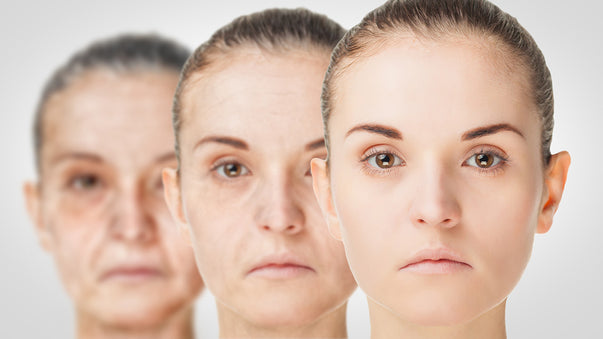Reprogramming Aging

Experimenting with yeast cells, UCSD researchers identified “a molecular circuit that controls cell aging, analogous to electric circuits that control home appliances," said senior researcher Nan Hao in a press release issued by UCSD (see below).
"Our study raises the possibility of rationally designing gene or chemical-based therapies to reprogram how human cells age, with a goal of effectively delaying human aging and extending human healthspan."
The researchers will now test their new model in more complex cells and organisms and eventually in human cells to seek similar results.
Reprogram the Molecular Circuit that Guides Aging
Molecular biologists and bioengineers at the UC San Diego have unraveled molecular aging mechanisms in yeast cells.
As described in a study published in Science, the researchers isolated distinct paths that cells travel during aging and engineered a new way to genetically program these processes to extend lifespan.
Half of the cells age through a gradual decline in the stability of the nucleolus. This is a region of nuclear DNA where key components of protein-producing "factories" are synthesized.
The other half age due to dysfunction of their mitochondria. They are the energy production units of cells.
The researchers found a master circuit that guides these aging processes. And they reprogrammed the master molecular circuit by modifying its DNA. This created a novel aging route that features a dramatically extended lifespan.
More Accurate CRISPR DNA Editing
Biomolecular engineers at Rice University have found a way to enhance the accuracy of gene editing
A research paper was published in Science Advances. It describes a set of tools that increase the accuracy of CRISPR-based gene editing up to 6,000-fold compared with the current state-of-the-art.
Cytosine base editors are able to convert cytosines (C) to thymines (T) in the human genome. A new cytosine base editor permits precisely modifying the single targeted C while minimizing unwanted C edits that may occur when there are consecutive CC.
The engineers are persuaded that this new technology's level of precision could significantly contribute to treating genetic disease.
Nanoparticles Precisely Deliver Anti-Cancer Drugs
Researchers at Lund University have developed a promising approach for treatment of lung cancer.
The treatment is described in a study published in Advanced Therapeutics. It combines a novel surgical approach with smart nanoparticles to specifically target lung tumors.
The nanoparticles were engineered to only release their drug content upon a specific cue which is present in the tumor area. And they are deployed with a novel surgical technique which introduces the nanoparticles only into the blood vessels of the lung.
Toward Long-Term Cancer Immunotherapy
Researchers at University of Pittsburgh have identified an "immune memory checkpoint" in immune cells. It could improve immunotherapy and help prevent cancers from recurring.
The results of a study with mice and human samples were published in Nature Immunology. They describe an important biological mechanism that could be exploited to provide durable, long-term immune response against tumors.
Mice that had a protein called Neuropilin-1 (NRP1) genetically deleted on killer T cells responded more positively to immunotherapy. And they were better protected against secondary tumors compared to normal mice.
Neurotransistors for Neuromorphic Computers
Scientists at TU Dresden and Helmholtz-Zentrum Dresden-Rossendorf (HZDR) have imitated the functioning of brain neurons using semiconductor materials.
A research paper was published in Nature Electronics. It describes how the scientists simulated the properties of neurons and modified a classical field-effect transistor to create an artificial "neurotransistor." The advantage of such an architecture lies in the simultaneous storage and processing of information in a single component.
This is a step toward brain-inspired neuromorphic computers able to adapt to changing tasks during operation. And this would enable them to solve problems for which they were not originally programmed.
Pencils Draw Smart Tattoos to Monitor Health
University of Missouri engineers have suggested that, one day, people could monitor their own health conditions by simply picking up a pencil and drawing a bioelectronic device on their skin.
In a paper published in PNAS, the engineers have shown that a simple combination of pencils and paper could be used to create smart tattoo-like devices that might be used to monitor personal health. Pencils with 93 percent graphite can create on-skin bioelectronic devices drawn on commercial office copy paper and applied to a person's skin with a biocompatible spray-on adhesive.
According to the engineers, the discovery could have broad future applications in home-based, personalized health care.
Kill Switch for Safer CRISPR RNA Editing
Scientists at Cornell University, Rockefeller University, and Memorial Sloan Kettering Cancer Center have found evidence that a single protein derived from a common strain of bacteria found in the soil could offer a safer way to edit RNA.
A research paper was published in Science. It shows that the protein, called AcrVIA1, can halt the CRISPR-Cas13 editing process.
This acts as a 'kill switch' that can be used for controlling application of Cas13 CRISPR. Anything that the Cas13 edits, this anti-CRISPR protein can shut off.
More Articles
Don't miss a beat! In our Pulse Newsletter, Thrivous curates the most important news on health science and human enhancement, so you can stay informed without wasting time on hype and trivia. It's part of the free Thrivous newsletter. Subscribe now to receive email about human enhancement, nootropics, and geroprotectors, as well as company news and deals.
Read more articles at Thrivous, the human enhancement company. You can browse recent articles in Thrivous Views. See other Pulse Newsletter articles. Or check out an article below.
-
Aging Could Be Significantly Slowed
The aging research breakthrough covered in the last issue of Pulse is making headlines. UCSD scientists created a "novel aging ...
-
Repurposing Existing Drugs for COVID-19
Scientists worldwide continue their push to develop effective treatments and a vaccine for the highly contagious COVID-19. A press release ...


